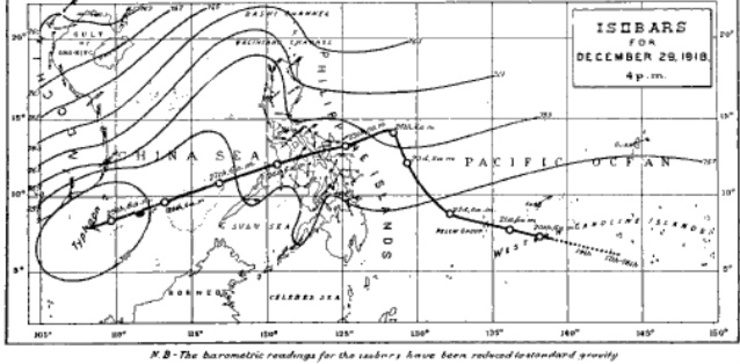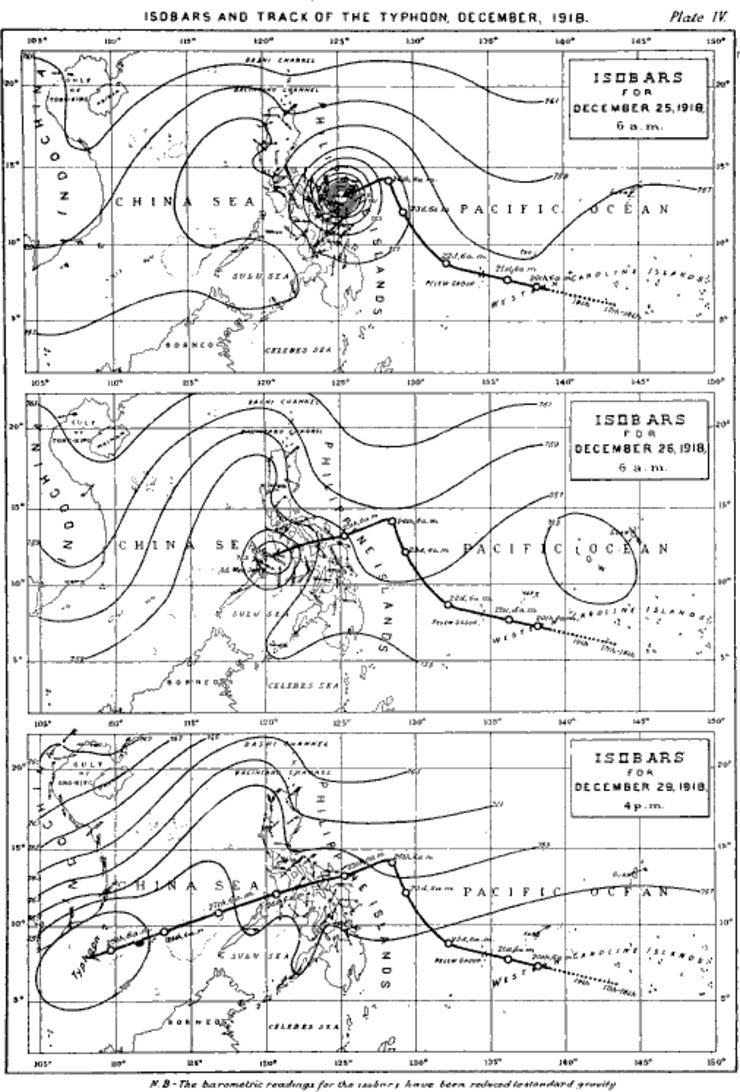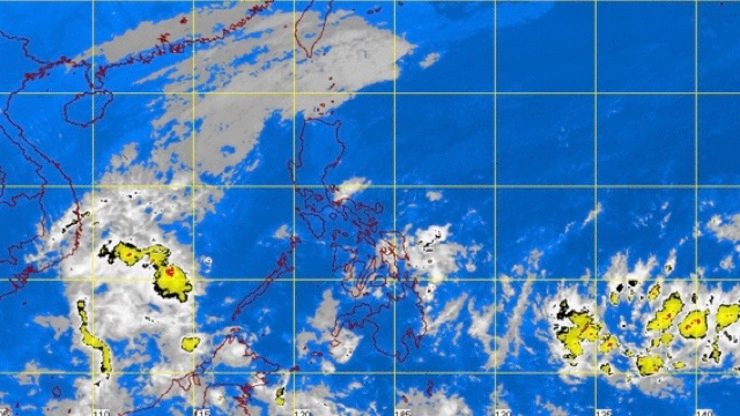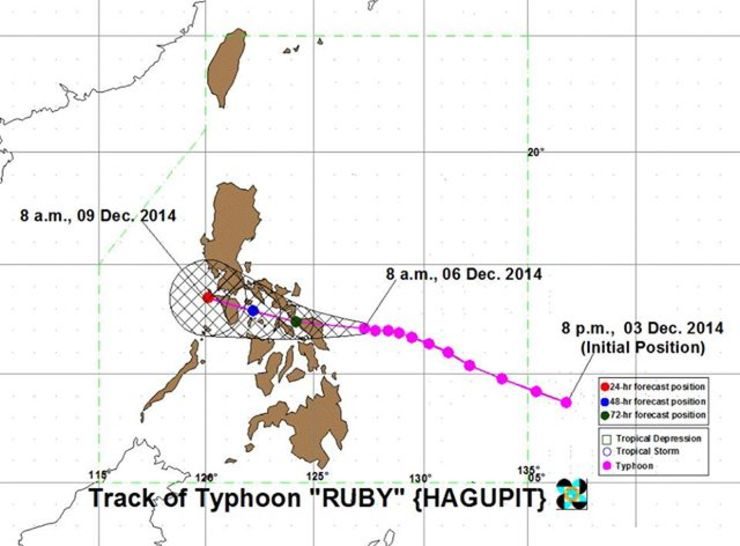SUMMARY
This is AI generated summarization, which may have errors. For context, always refer to the full article.

MANILA, Philippines – Filipinos who were looking forward to Christmas festivities may have found the rain that poured a party pooper. (READ: Christmas Eve rain, flood dampen holiday mood)
But rainy Christmases are not unusual in the Philippines. And there have been times when the weather was much worse.
In 1947, for instance, Typhoon Jean ruined the holidays. Typhoon Jean was not even the most noteworthy of storms that hit the country on Christmas day. That record belongs to a storm called Quantico, which made landfall in Sorsogon just as people were waking up early morning of December 25, 1918.
Typhoon Quantico was considered so unusual at the time that a meteorologist even wrote a book about it. The typhoon got its name from the steamer that got wrecked in Romblon that day.
Unusual?
Formed over the Western Carolines on December 17, 1918, Quantico was initially expected to hit the Philippines.
In the book The ‘Quantico’ Typhoon: December 25, 1918, written by Weather Bureau’s chief meteorologist Jose Coronas, the typhoon was described as “abnormal and unexpected.”

In the next days, however, the storm consistently moved northeast and away from the country. But very suddenly and, seemingly without any warning, it changed course on December 25 and headed toward the opposite direction which was southwest.
Apart from its sudden change in direction, Coronas found the storm unusual because:
- It occurred in the last week of December
- In the 12 years prior to Quantico’s landfall, it was the only December typhoon that headed West South West (WSW)
- It already began heading south while still in the eastern part of the Philippines
Corona based his observations on records of typhoons within 12 years before Typhoon Quantico struck.
Here’s a timeline of what happened:
December 17-19: Typhoon Quantico formed over Western Carolines
December 22: It began approaching the Philippines. Anticipating it would move in the same direction in the next two days, warning signals were raised in Eastern Visayas.
December 23: The weather bureau and other foreign observatories released reports it was inclining northward to the east of the Visayas.
They were almost certain about Typhoon Quantico’s direction. In fact, Coronas said they considered it a rule that, “when a typhoon inclines decidedly northward, especially to the east of the Philippines, it will continue inclining more to the north and recurve northeastward.”
December 24, 6am: Typhoon Quantico’s direction was still decidedly northward and away from the Philippines. Storm signals were taken down.
December 24, 4pm: Minimal changes were seen – not enough to suspect any landfalls. The typhoon was almost stationary.
December 25, 6am: The typhoon’s direction suddenly changed heading south. It made landfall in Sorsogon, bringing in very strong winds that damaged buildings made even of strong materials.
December 25, 4pm: Its direction was moving decidedly WSW, causing severe damage in Masbate.
December 25, 10pm: It reached Tablas Island in Romblon, causing the wreckage of steamer Quantico. It killed 21 people. Bringing in very strong winds, it also destroyed houses and buildings in the province.
December 26: Typhoon’s Quantico’s center was located between Palawan and Mindoro. It also brought damage in Coron, Culion and Busuanga in Palawan.
Still moving in that same direction, it left the Philippines on the same day.
Better forecasting technology
It is important to note much has changed in the field of weather forecasting since the time Typhoon Quantico hit the country.
More advanced equipment, together with better baseline scientific data, have contributed to significant improvements in the accuracy of weather forecasts in the past decades.
Thus, what had been thought as unusual in the past may not be the same nowadays.
“In 1918, there was no satellite technology yet. Northeast monsoon (Amihan) elements weren’t clear to them before,” Michael Padua, Weather Philippines Senior Typhoon Specialist told Rappler in a phone interview. During the Spanish times, Padua explained, meteorologists based their predictions more on pressure ratings and map drawings.
Dr Gerry Bagtasa of the Institute of Environmental Science & Meteorology, UP Diliman (Weather Manila and Project NOAH) said the same thing: “We need to note that analysis of tracks during that time had considerable errors compared to what we have now.”
After Typhoon Quantico, typhoons with almost, if not exactly the same track formed in the country as well. Among these were Typhoon Monang of 1993, Typhoon Unding of 2004, and this year’s Typhoon Ruby.
Typhoons have also been recorded to have occurred in the country between Christmas and New Year’s eve. These storms included Typhoon Jean of 1947, Typhoon Harriet of 1959, and Typhoon Puring in 1993. Typhoons during this time of the year generally happen every 20-50 years, Padua said.
Hanging Amihan
Storms that hit the country during the holiday season are mainly brought by the northeast monsoon, known to Filipinos as ‘Amihan.’
Amihan season in the Philippines occurs when winds coming from China and Siberia start breezing through the country, causing the cool temperatures usually felt as the Christmas season nears.
Padua said that typhoons do head in the WSW direction especially during the months of December to January because Amihan winds are strong.
“No matter how rarely typhoons occur in a particular month, and no matter what their normal track may be, sailors and observers in charge of weather forecasting should always be ready for emergency whenever there are any signs of an existing typhoon.”
– Jose Coronas SJ
“So, if there is a strong typhoon forming over the Caroline Islands going to the Philippine Sea, once it reaches Bicol, strong Amihan winds will push it to a WSW direction (provided that it reaches a high latitude). It may either hit Samar or Sorsogon,” Padua explained.
Always be ready
What this means is that, even during the holidays, Filipinos always need to be prepared and ready, meteorologists say. And even those living in areas not visited often by typhoons cannot be complacent.
With its location along the typhoon belt, at least 20 typhoons enter the Philippine Area of Responsibility every year. As Coronas said in the first part of his book, “No matter how rarely typhoons occur in a particular month, and no matter what their normal track may be, sailors and observers in charge of weather forecasting should always be ready for emergency whenever there are any signs of an existing typhoon.” – Rappler.com
Sources: The “Quantico” Typhoon: December 25, 1918 by Jose Coronas, S.J., www.tumblr.malacanang.gov.ph
Add a comment
How does this make you feel?


There are no comments yet. Add your comment to start the conversation.